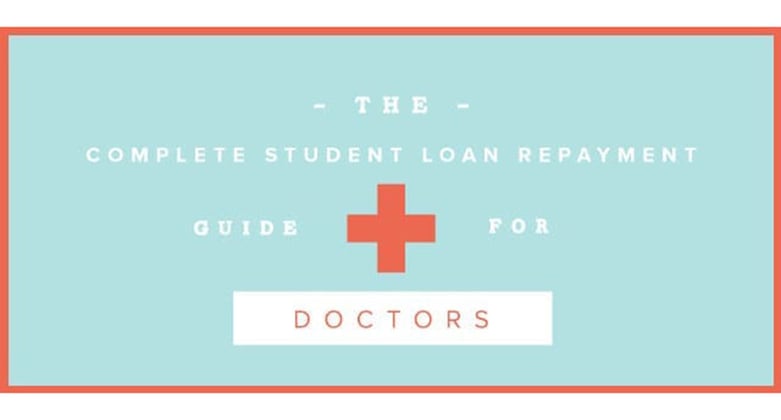Student loan repayment is something on every young doctor's mind. A steep $176,000 is the average amount doctors owe in student loans after graduating from American and Caribbean medical schools, says Cat Alford in the article "The Ultimate Student Loan Repayment Guide for Doctors" on the informative website Student Loan Hero , run by a financial education company that is helping students learn how to get out of debt.
The UMHS Endeavour highlights some of the useful information included in "The Ultimate Student Loan Repayment Guide for Doctors."
Association of American Medical Colleges Report
The $176,000 figure is the average amount of medical school debt that graduates had in 2014, the Association of American Medical Colleges said, and as Student Loan Hero author Cat Alford notes, the number does not include debt new doctors may have accrued as undergraduates. Ouch.
“Because physicians earn high incomes when they graduate, many assume repaying student loans will be something they will be able to handle with ease,” Alford writes. “But with ever increasing costs and a decline in physician reimbursements, student loan repayment is something all physicians should take the time to research and consider. This includes calculating how the repayments will fit in their overall budgets and how long it will take to pay all these loans. After all, they worked far too hard for too long to be saddled with financial issues.”
Following are highlights of tips Cat Alford gives on Student Loan Hero to help young doctors pay off med school debt.
Crunch the Numbers First
Alford recommends determining exactly how much you owe and at what interest rate.
“Learn how much is owed and decide how much time it will take to pay them back before being tempted to upgrade your car or home,” Alford writes. “For example, if a physician wanted to pay back $176,000 at 6% interest over 10 years, that would be around $1,954 a month every month for ten years. This includes nearly $58,500 in interest charges over the life of the loan.”
Alford notes that $2,000 a month might not seem like much considering a physician’s paycheck, but it is no small number. In addition, the UMHS Endeavour wants students to understand that salaries are quite modest during residency, so keep that in mind.
Refinance Your Student Loans
Consider refinancing your loans, Alford says.
“Refinancing your student loans can be a great way to save on interest payments over time,” Alford writes. “This is especially true if you have private student loans with rates as high as 9%. Essentially, you would work with a new loan company who would pay off your student loans from your current provider and repackage it to you at a lower interest rate.”
Think carefully when considering refinancing. Alford says. You need a good FICO credit score to get the best rates, and refinancing federal loans can be tricky.
“Make sure you are prepared to make your payments on time because if you refinance federal loans, you won’t have access to their flexible repayment options anymore,” Alford says.
This means new doctors that refinance with private companies may no longer have access to Income-Based Repayment (IBR) and Pay As You Earn (PAYE), both of which we will discuss next.
Enroll in Income-Based Repayment
With the average salary for residency at $50,000 annually, many new med school grads often choose to postpone paying loans by going into forbearance. While this helps people avoid making payments, interest accrues rapidly.
Alford notes key benefits to the flexible IBR and PAYE payment plans.
- “If you enroll in income-based repayment (IBR) or a program called Pay As You Earn (PAYE) during residency, you will only have to make a student loan payment based on 0–-10% of your income towards your student loans (0–15% if you started borrowing before July of 2014).”
- “The other benefit is that IBR postpones interest capitalization and gives you a partial interest subsidy for the first three years of making payments. If you pay this for 20–25 years, depending on the program, the rest of your student loans are forgiven.”
- “Another option is to work in the government or in the not-for-profit sector in approved programs. If you do this and make IBR payments for 10 years, your loans will be forgiven.”
- “In case you were wondering, there is also no limit to the amount of student loans that can be forgiven, so medical students (who have some of the highest student loan balances among professionals) stand to benefit the most.”
Other Options
Cat Alford also discusses working in a Health Shortage Area because some states (Massachusetts and Georgia, for example) offer a public service loan forgiveness plan; joining the military (the U.S. Navy has a Navy Financial Assistance Program for grads who work in the Navy as a resident); and negotiating a signing bonus when you finish residency and find a job.
To read all of Cat Alford’s excellent advice, read the full article on the Student Loan Hero at https://studentloanhero.com/featured/ultimate-student-loan-repayment-guide-for-doctors/.
Follow the Student Loan Hero on Twitter at @StudentLoanHero and "like" their Facebook page at https://www.facebook.com/StudentLoanHero
(Top image) Image courtesy of StudentLoanHero.com
About UMHS:
Built in the tradition of the best US universities, the University of Medicine and Health Sciencesfocuses on individual student attention, maintaining small class sizes and recruiting high-quality faculty. We call this unique approach, “personalized medical education,” and it’s what has led to our unprecedented 96% student retention rate, and outstanding residency placements across the US and Canada. UMHS is challenging everything you thought you knew about Caribbean medical schools.

Scott is Director of Digital Content & Alumni Communications Liaison at UMHS and editor of the UMHS Endeavour blog. When he's not writing about UMHS students, faculty, events, public health, alumni and UMHS research, he writes and edits Broadway theater reviews for a website he publishes in New York City, StageZine.com.















